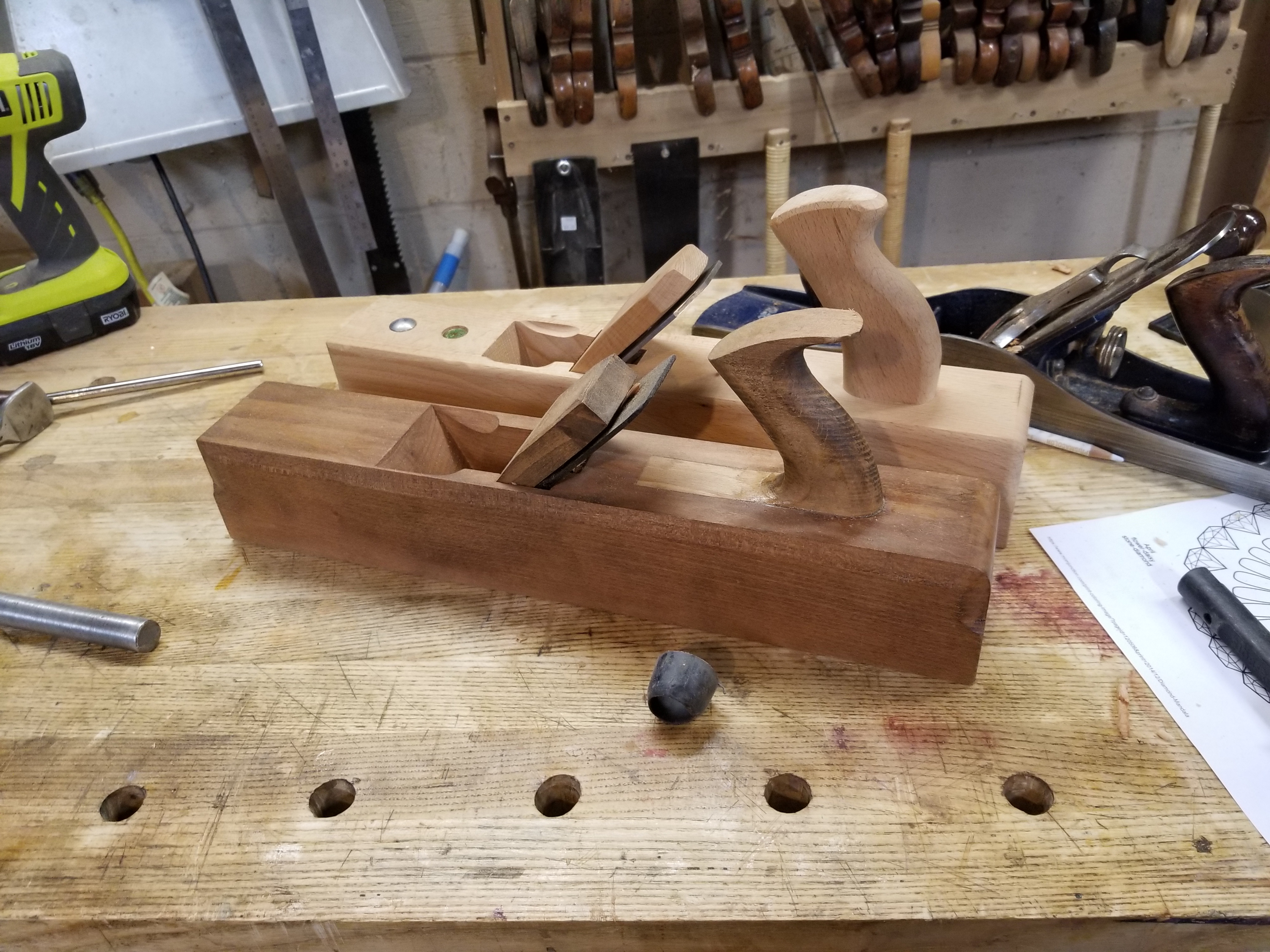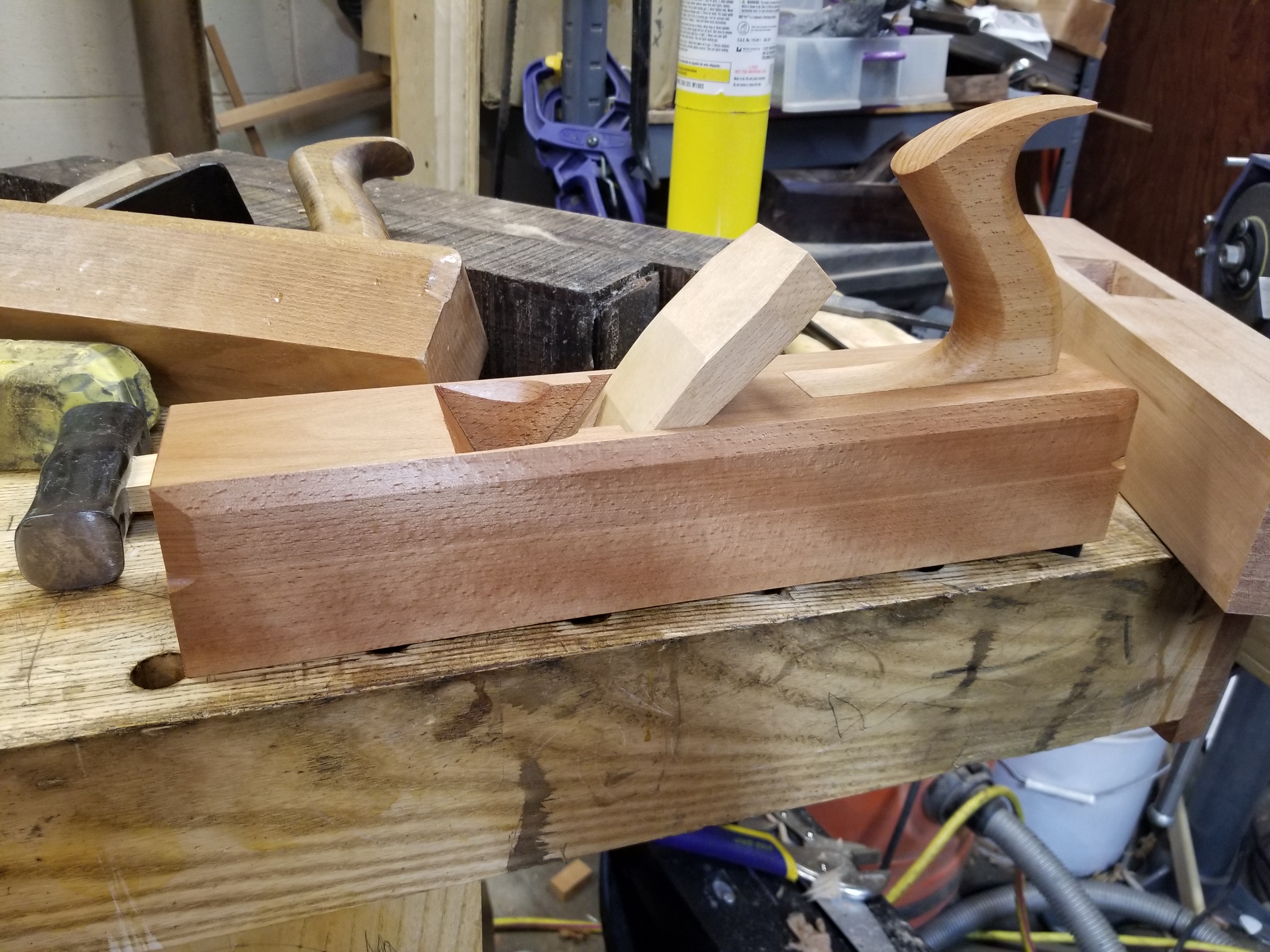@D_W
Ref your "I can't imagine where a scrub would fit in for this kind of stuff..."
Supposing that the original rough boards showed a fair degree of cupping. Those are the circumstances where I would use my Nr 5 - configured-as-a-scrub. I'd chamfer the far edge and then get the worst of the cupping off while looking for the first practical opportunity to switch to the normal jack for conventional flattening.
I understand why you maintain that the first step is not strictly necessary but OTH I can't see that it is disadvantageous.
It's necessary obviously to plane in the direction of the grain with a wood using a jack, etc. As you're chamfering the back side of the wood, if you're planing with a jack plane along the direction of the wood, you're already done at that point with one side of the board, with the near facing side to complete. the job as it's done leaves a flat board that can be near finished with a try plane in a couple of strokes.
It feels like more work because you're removing a much greater volume of wood with each stroke, but the flip side of that is that you're spending a far higher percentage of energy removing wood, and less stabbing a small plane back and forth. If there's not much room for error on the thickness of a board, you don't need to lose width to create a large chamfer as there will be no blowout of wood. It works so well that it may be boring and seem to easy if you'd prefer to fight with the wood a little bit and separate the steps (removing the ears from any subsequent work that may need to be done).
There's no need to have the plane going across the grain to ensure flatness (most people in a short stroke like that will plane a board convex instead of cupped, anyway, leaving more follow up). Any significant issue with flatness laterally, along the length or diagonally can be seen just by lifting one end of the board up and looking down the face toward the bench (or squatting down and looking if the board is large and lifting is more trouble).
In dimensioning, efficiency is gained no matter how rough the work if the wood is planed cleanly and the balance of engaged full cut and pushing of the plane is skewed as far as possible in the direction of keeping the plane cutting through the full stroke vs. just keeping it moving. There's a step beyond this for efficiency in thicknessing, but not relevant here maybe and something one would only get into if looking at dressing 100 board feet of wood for a project - that is, trying to set most of the work up so that overlapping strokes are made and the length of the stroke is a full plane stroke without stepping anywhere or squatting or walking or anything else. strokes are made within reach, and then a step is taken to work another area with full strokes. if the strokes are short or we start walking around, things get slow.
This kind of thing is what makes planing like a brisk walk, and not a series of sprints and stops. The predictability of the work also allows you to disengage from examining every stroke but rather set a rhythm for the work and then you can observe what's going on instead of concentrating on plane strokes. As in, the plane keeps moving and you adjust on the fly while working, never breaking rhythm or getting stuck working through work you created for yourself (you'll notice that if you do a significant amount of work planing a cup off of the convex side of a board with cross strokes, or doing the same with the edges on the concave side, you're likely to have to address flatness in length to a significant degree following that. when the work is done down the length wherever possible, the face is completed all at once. But it will feel at a given instant per stroke like it's more work because the plane is continuously engaged (that's just a matter of physical limitation then to pick the brisk walk pace).
Just about everything in hand tool work is like this - including rip sawing or resawing, finding a pace that can be maintained and a feel that's optimal for tools removing material. There's no fighting, short strokes or stabbing anything, or getting surprise damage. It's nice that when everything is set properly that the predictability comes along with improving the volume of work done, and not at the cost of it.






